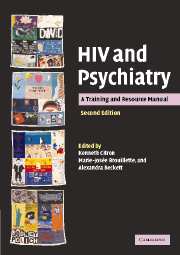It was in 1996. The manuscript for the first edition of this Training Manual, produced under the auspices of Health Canada and the Canadian Psychiatric Association, was being completed. Many clinicians caring for HIV-infected individuals were becoming demoralized. The nucleoside reverse transcriptase inhibitors (NRTIs), the only class of antiretrovirals available at the time, were failing to make a significant impact on mortality. The full implication of the development of resistance to these medications was being felt.
Then, a second class of antiretroviral agents, the protease inhibitors (PIs) became available. Clinical trials were initiated and, at the International AIDS Conference held in Vancouver (Canada) in 1997, it became clear that a turning point had been reached. Antiretrovirals from different classes, used in combination, were exerting a very significant impact on mortality among HIV-infected individuals (Figure 0.1). Clinically, the result was striking. The waiting rooms of HIV clinics were the theaters of astonishing scenes. Patients on the brink of death were putting on weight and regaining stamina. Enthusiasm among patients and clinicians alike was palpable.
Psychiatrists too, were enthused. There was a sense that the psychological and neuropsychiatric burden associated with this infection would significantly decrease. Almost 10 years down the road now, it has become clear that the need for psychiatric care has far from decreased. As patients live longer, psychological and psychiatric difficulties negatively impact on quality of life.
The efficacy of Highly Active Antiretrovial Therapy (HAART) has a price: strict adherence to a complex medication regimen.


